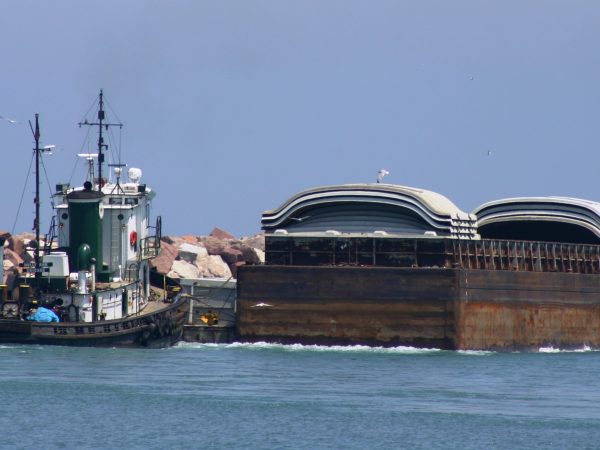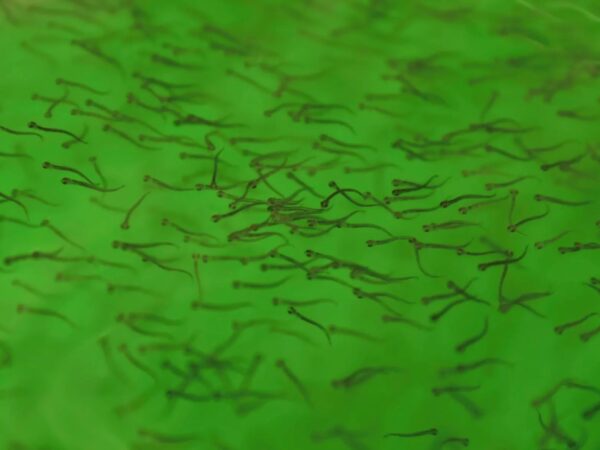
Science Says What? is a monthly column written by Great Lakes now contributor Sharon Oosthoek exploring what science can tell us about what’s happening beneath and above the waves of our beloved Great Lakes and their watershed.
The wolves of Isle Royale recently came within a hair’s breadth of dying out — victims of years of inbreeding. By 2018, there were just two ailing and closely related wolves left on the remote Lake Superior island.
The pack was bound for oblivion. So too was the ecosystem it helped maintain.
Without a top predator, the island’s moose population had ballooned out of control and things were looking grim. The moose were starving to death as they stripped bare the island’s balsam fir trees, their main food during the long cold winter and a vital part of the ecosystem.
It was a cascade of events that saw local conservationists take opposite sides over the extent of our responsibility to re-balance the island’s ecosystem in an era of human culpability. The gauntlet was down: Do we bring in fresh wolves? Or do we let Mother Nature take her course?
It was, of course, a variation of similar debates happening around the planet.
More and more these days, conservationists are struggling over whether and how to intervene in the face of rapid human-induced changes. This has led some to question the very essence of what they do. Conservation is about preserving wild and historic conditions, yet this may no longer be possible, given that pollution, climate change, exotic species invasions, extinctions and land fragmentation are altering every ecosystem on the planet. Creatures that historically lived in certain places may no longer be able to survive there.
In the case of Isle Royale — 15 miles (25 km) from the mainland — the biggest culprit is climate change. Warming temperatures have caused the ice crossing wolves used to take from the mainland to the island to disappear.
No new wolves, equals no new DNA, equals a death knell for the island as we know it.
Wolf pack saved … for now
In 2018, the National Park Service authorities who manage the island decided it was indeed their responsibility to intervene and airlifted 19 wolves from Minnesota, Ontario and Michigan’s Upper Peninsula. Their 11th hour intervention worked — the latest survey shows 31 wolves. Meanwhile, moose are down to 967 from about 2,000 in 2019. But as the Associated Press’s John Flesher points out, results haven’t settled the debate over whether people should rescue struggling species at Isle Royale or other designated wilderness areas, where federal law calls for letting nature take its course.
“We have felt and still believe that the National Park Service should not have intervened and set up this artificial population of wolves,” Kevin Proescholdt, conservation director for the advocacy group Wilderness Watch told Flesher.
Keeping the island’s ecosystem on an even keel will probably require perpetual airlifts. Even the Michigan Tech scientists who’ve been studying Isle Royale’s ecosystem for years and celebrated the wolves’ relocation admit park managers may have to import fresh wolves every decade or so.
Yet other species that once called Isle Royale home have come and gone. That includes Canada lynx and woodland caribou, which had the same predator-prey relationships as the wolves and moose.
In that case, we just let it happen. So did park managers do the right thing by airlifting in fresh wolves?
The train has left the station
University of Minnesota conservation biologist Jessica Hellmann has been examining that kind of question for most of her career and says it’s getting harder and harder to just let nature run its course.
“I think that train left the station,” Hellmann said. “If we want biodiversity conservation and ecosystem services, if we want humans to benefit from nature, we will be managing ecosystems in ways we weren’t before so they can persist under climate change.”
Back in 2009, she and her colleagues proposed a system for assessing when to help wildlife relocate to places they aren’t currently found. Writing in the journal Proceedings of the National Academy of Sciences, they suggest a scoring system for weighing scientific and social implications of the decision to move animals around. It’s a system that can be applied to other similar conservation decisions.
Does the ecosystem really need an intervention? Is the intervention likely to be effective? Do people want it? Are there available resources? In whose interest are we acting?
Hellmann and her colleagues don’t expect their scorecard to eliminate controversy — she says they often disagree among themselves when applying it, even in theoretical situations. But she argues that because climate change is so radically and rapidly altering habitat, we need to consider equally radical answers.
In the Isle Royale case, there’s an added argument for airlifting wolves, says Hellmann. The island is the site of the longest continuous predator-prey study in the world. Scientists have been monitoring the wolf and moose populations since 1958, making note of how each responds to and affects physical and biological factors, such as disease, severe weather and climate change.
The scientific literature is chock full of surprising ecosystems effects of introduced animals that only become clear after long-term studies. Hellmann points to the case of Yellowstone National Park where the reintroduction of wolves in 1995 led to a cascade of ecological changes, including a boost to beaver populations, the comeback of aspen and water quality improvements.
“I still think there’s a lot to learn about those ripple effects that a model ecosystem like Isle Royale or Yellowstone could be used to study,” Hellmann said. “You never know what insights will appear down the road that didn’t appear in the first few years.”
Catch more news at Great Lakes Now:
Science Says What? How 5th-graders counting plants can lead to positive change
Science Says What? The weight of the world rests on a small Canadian lake
Featured image: Isle Royale Winter Study. (Photo courtesy of Michigan Tech via Sharon Oosthoek)





